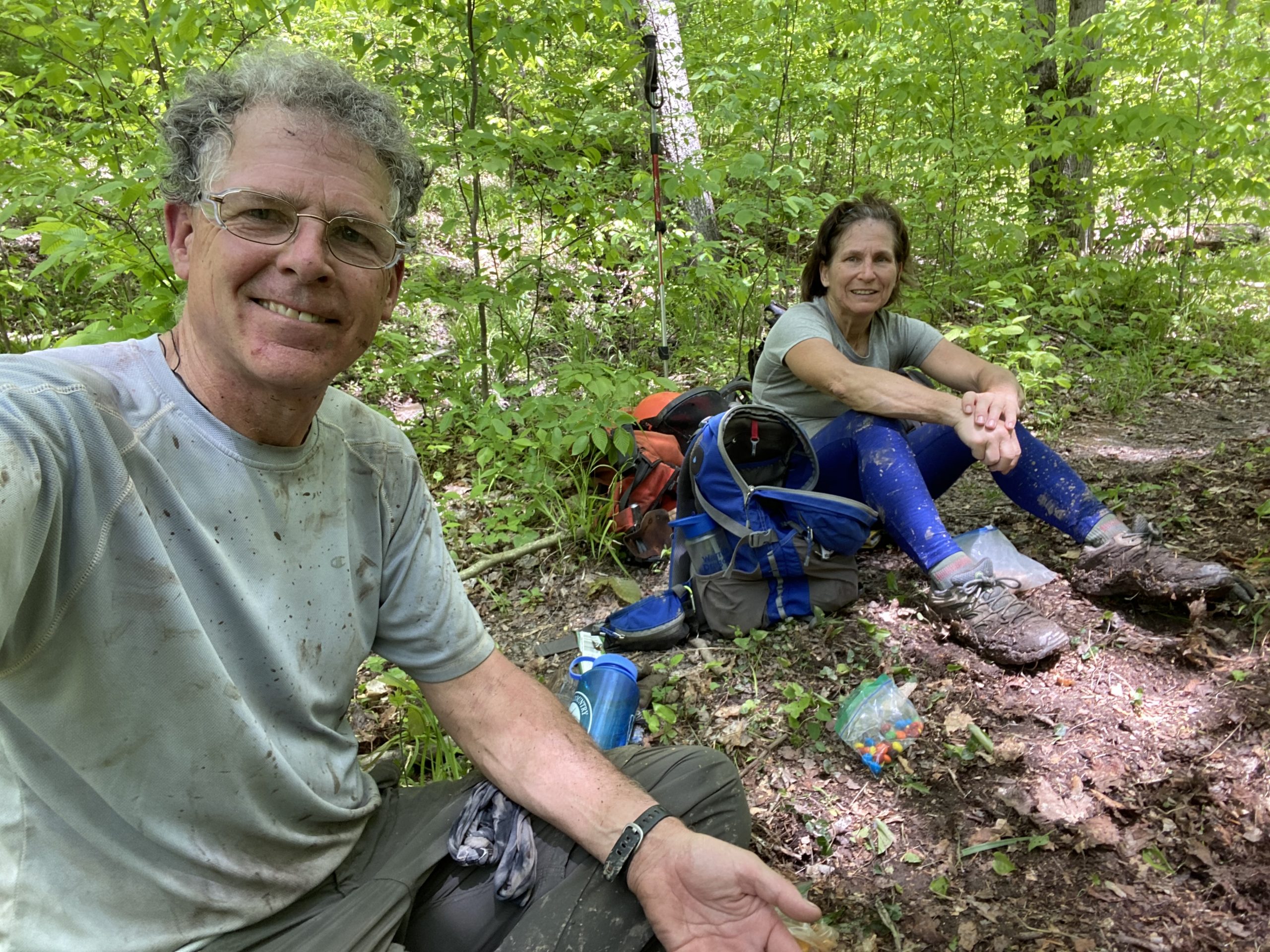Our Stories
Mike and Tina Toole: Volunteer Spotlight
As states, counties and individual land managers begin to welcome back group projects on the Trail, the NCTA has established a task force to help guide discussion and decision making, addressing best practices for our volunteers returning to trail work.

The task force is comprised of over a dozen Chapter and Affiliate leaders, volunteers, National Park Service and U.S. Forest Service partners, NCTA staff and board representatives. The group met recently to create a framework for Trail Leaders to make solid decisions about how NCT volunteers could safely consider hikes, trail projects and events over the upcoming field season. They will continue to meet in the coming months to adjust and adapt the guidelines as needed. Two volunteers NCTA would like to shine the spotlight on, for both their involvement in this task force and for their overall commitment to the NCT and their Chapter, are Mike and Tina Toole.
NCTA: Tell us a little about yourselves. How did you become familiar with the North Country Trail?
Tina: We enjoy outdoor sports. Along with hiking and backpacking, we love to summit mountains, kayak and paddleboard. To date we have summited 46 of the 48 contiguous state high points, leaving Arkansas and Louisiana to climb. Mike: I am originally from Media, PA just outside of Philadelphia. Tina is originally from Southport, CT. Tina and I have lived in Warren, PA for the past 35 years. We became aware of the NCNST as Tina and I started to have more free time to hike.
NCTA: Describe your volunteer path of engagement, from no involvement to your current role. Assuming you at least used the Trail before anything, what inspired you to go beyond only using the Trail, to engage on a volunteer level? What made you want to pursue membership and/or a leadership role with your Chapter?
Tina: About 15 years ago, we set out to hike the approximately 100 miles of NCT in the Allegheny National Forest (ANF). This journey took us about three years and taught us a lot. As we hiked, we began to notice and appreciate improvements to the Trail and decided to volunteer to help with maintenance, once we reached our goal of hiking the ANF miles. Two former presidents of the ANF Chapter helped us adopt and learn to care for our newly adopted 6.7-mile section. We also started to attend Chapter meetings. As we did so, we saw a need for leadership there, with several key positions not filled. Mike volunteered to take over as Treasurer to set up guidelines for managing the Chapter funds. Shortly after that, Tina volunteered to become the Trail Coordinator, a position she held from the fall of 2013 until March 2020. In the meantime, Mike has held all the officer roles and Tina is now President.
NCTA: A leadership role can sound intimidating to some; people seem hesitant of extra commitment. What gives you confidence to balance this and your personal/professional life?
Tina: To us, leadership means that you are taking responsibility for getting a certain job done. No leader can do it alone. So one of the important parts of the job is encouraging and nurturing other volunteers to help out. If everyone does a small part, a lot can be achieved. Each volunteer can contribute the amount of time that’s right for them. With a little commitment of time, a leadership role or volunteering, can add enjoyable social time and a great feeling of satisfaction. Mike: For me, being a Chapter officer is a very rewarding experience. It helps you understand the function of the Chapter as well as the national organization. It does not have to be intimidating if you approach it by participating at Chapter meetings so that you can gain knowledge about the Chapter and its officers. As a need arises with Chapter functions, you can then volunteer to help someone or take a lead role with the proper guidance. Being part of a volunteer project and seeing it through is very rewarding. When volunteering it is important to keep your priorities in line. A person’s health, family and job are far more important than volunteer work. A volunteer must never be afraid to ask others for help.
NCTA: How did you learn about the [NCTA] Task Force? What made you want to become a part of that? What do you hope to offer in terms of expertise or direction?
Tina: We learned about the Task Force at a Chapter Leaders meeting. Both of us felt we had something to offer. I had just finished pulling together our Chapter officers and trail coordinators to set up protocols for getting back to trail maintenance in the ANF. In this process, Mike had done the research on disinfection of tools and safety of the volunteers. The protocols were approved by the U.S. Forest Service and critiqued by Val Bader, NCTA Director of Trail Development. We were about to test them in the field with a dozen experienced trail workers. We felt we could share these experiences with the Task Force.
NCTA: Describe your experience with the Task Force so far. Is there any task, project or conversation that you’ve been particularly intrigued or pleased with? Any particular accomplishment or step forward that you’re especially proud of?
Tina: Getting people together from all the areas and agencies within our trail community allows for a great exchange of ideas and concerns. It gave us ways to deal with our situation in the ANF and hopefully we were able to contribute meaningful information to others. The document that Val Bader put together was able to encompass all the threads the Task Force discussed and should be a good framework as we move forward in this pandemic. Mike: Hearing and understanding people’s concerns about how to safely get back out along the whole length of the Trail has been very intriguing. The input that has been supplied by Chapter, Affiliate and agency personnel has been invaluable. I was especially interested in the discussion that took place about the use of facial masks and gloves from a person with a medical background. I felt that it was important to define what an acceptable facial mask and gloves were so that we all were on the same page. Being able to have a consensus that trail maintenance was the first priority was a great first step. Working through the issues with having organized hikes is certainly a challenge since trail usage varies immensely along the Trail.
NCTA: Do you have any advice or encouragement for others considering this type of volunteerism or leadership?
Tina: Volunteerism is about helping others. With a small input of your time, you can make a difference. Give as much time as you feel comfortable with. As you do, you’ll find that you are also helping yourself gain satisfaction and a new community! Mike: Being able to help make a difference in a person’s experience on the Trail is extremely gratifying. Having just one person say “thank you” for my volunteer work is what keeps me coming back to helping with the Trail.
